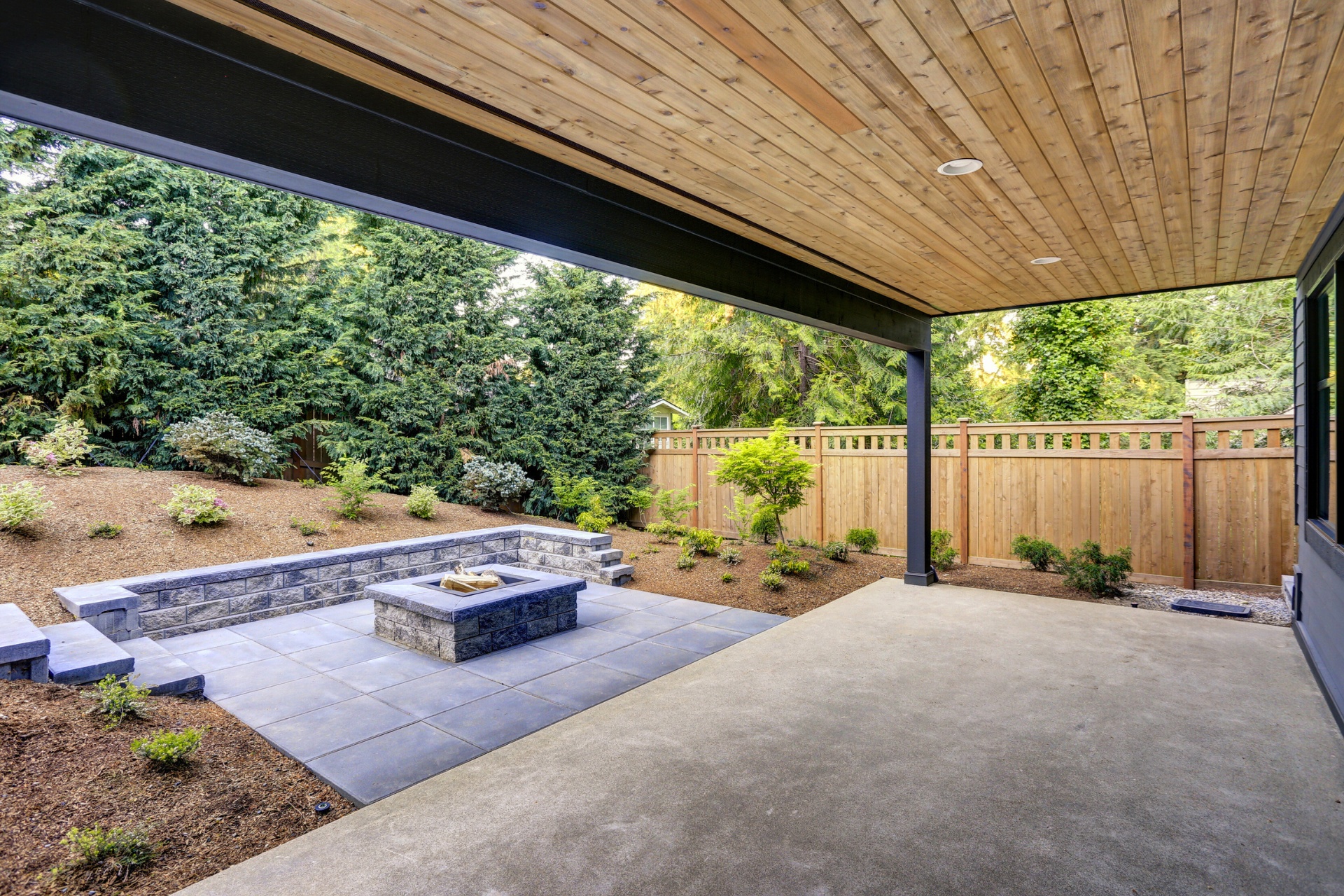You should seal your concrete 28 days after it cures. Depending on the needs of your surface, choose between penetrating or film-forming sealers.
Penetrating sealers require a pump sprayer or roller for deep absorption, while film-forming types need a roller or brush for even coverage.
Reapply your sealer every 1 to 3 years if it’s acrylic and 5 to 10 years for epoxy or polyurethane variants.
High-traffic areas might demand more frequent reapplications. Signs of wear or damage that require resealing include fading color, surface cracks, or dull coloration.
Understanding Concrete Sealing
To effectively protect your concrete surfaces, understanding the variety of concrete sealers and their corresponding application methods is foundational.
Sealer types can be broadly categorized into two groups: penetrating sealers and film-forming sealers.
- Penetrating sealers absorb into the concrete to provide protection without changing the surface appearance, making them ideal for areas where maintaining a natural look is desired.
- Film-forming sealers create a protective layer on top of the concrete, enhancing its color and providing a gloss or matte finish.
Choosing the right sealer type depends on the specific needs of your concrete surface, including exposure to elements, traffic type, and aesthetic preferences.
Application methods also vary significantly between sealer types. Generally, penetrating sealers are applied using a pump sprayer or a roller to ensure deep absorption.
Film-forming sealers, however, might require more precision in application and are often applied with a roller or a brush to smaller areas to ensure an even coat.
Understanding these aspects ensures you’re equipped to make informed decisions about protecting your concrete surfaces effectively and avoid common pitfalls related to mismatched sealer types and incorrect application methods.
Initial Sealing Timing
Determining the optimal time to apply the initial concrete sealer is important for ensuring long-lasting protection and durability of your surface.
The timing of this initial application hinges on several technical considerations, primarily centered around the concrete’s cure time and the chosen application method.
Achieving the right balance is essential to maximize the sealer’s effectiveness and extend the lifespan of your concrete.
Here are key factors to keep in mind:
- Cure Time: You must allow the concrete to cure fully before applying the sealer. Typically, this means waiting at least 28 days after pouring. Premature application can trap moisture, leading to sealer failure and surface damage.
- Application Method: The method you choose (spraying, rolling, etc.) can influence the timing. Some methods require the concrete to be completely dry while others may be more forgiving.
- Weather Conditions: Ideal sealing conditions include dry weather and moderate temperatures. High humidity or extreme temperatures can affect sealer performance.
- Concrete Type: The specific mix and components of your concrete can alter cure times and sealer absorption rates.
- Manufacturer’s Recommendations: Always consult the sealer manufacturer’s guidelines for specific cure times and application methods tailored to their product.
Recognizing Reapplication Signs
The ability to spot the signs that your concrete’s sealer needs reapplication is critical for maintaining its durability and aesthetic appeal.
One primary indicator that your sealer is losing its effectiveness is color fading. Vibrant or specifically tinted concrete surfaces may start to appear dull or uneven in coloration.
This fading signifies that the protective layer is wearing thin, exposing the concrete to harmful UV rays and potentially leading to more significant damage if not addressed promptly.
Surface cracks are another clear signal that your sealer requires attention. While concrete is inherently prone to some level of cracking over time, a well-sealed surface should minimize the visibility and spread of these cracks.
If you begin to notice new cracks forming or existing ones becoming more pronounced, it’s likely that the sealer is no longer providing adequate protection against water penetration and freeze-thaw cycles, which can exacerbate these cracks.
Frequency of Sealer Reapplication
It’s important to know how often the sealing process should occur to ensure ongoing protection and aesthetic quality.
The frequency of sealer reapplication depends on several factors, including the type of sealer used, the level of traffic and wear, and the specific conditions of the environment in which the concrete is situated.
Understanding these variables will guide you in making informed product choices and in budgeting for maintenance costs.
The general guidelines for the frequency of sealer reapplication include:
- Acrylic Sealers: Reapply every 1 to 3 years, depending on exposure to traffic and weather.
- Epoxy or Polyurethane Sealers: These generally last longer, requiring reapplication every 5 to 10 years.
- Penetrating Sealers: Known for their longevity, these may not need reapplication for up to 10 years, but it’s critical to monitor the concrete’s condition.
- High-traffic Areas: Increase the frequency of reapplication to counteract the accelerated wear.
- Product Quality: Higher-quality products may extend the time between applications, impacting long-term maintenance costs.
Weather and Environmental Considerations
Variations in temperature and moisture significantly influence the sealer’s reapplication schedule. In differing climate zones, the rate at which a sealer deteriorates can vary widely.
For instance, in areas with extreme temperature fluctuations, sealers may undergo more rapid breakdown due to the expansion and contraction of the concrete, necessitating more frequent reapplications.
Regions with high humidity levels present a unique challenge as moisture can penetrate the sealer, leading to potential delamination and decreased effectiveness.
Urban areas with high levels of atmospheric pollutants can see accelerated degradation of sealer compounds. Chemical pollutants, such as acid rain or industrial emissions, can erode the sealer, reducing its protective qualities and lifespan.
Therefore, in areas with significant pollution, opt for sealers with enhanced resistance to chemical attack and adhere to a more stringent reapplication schedule.

